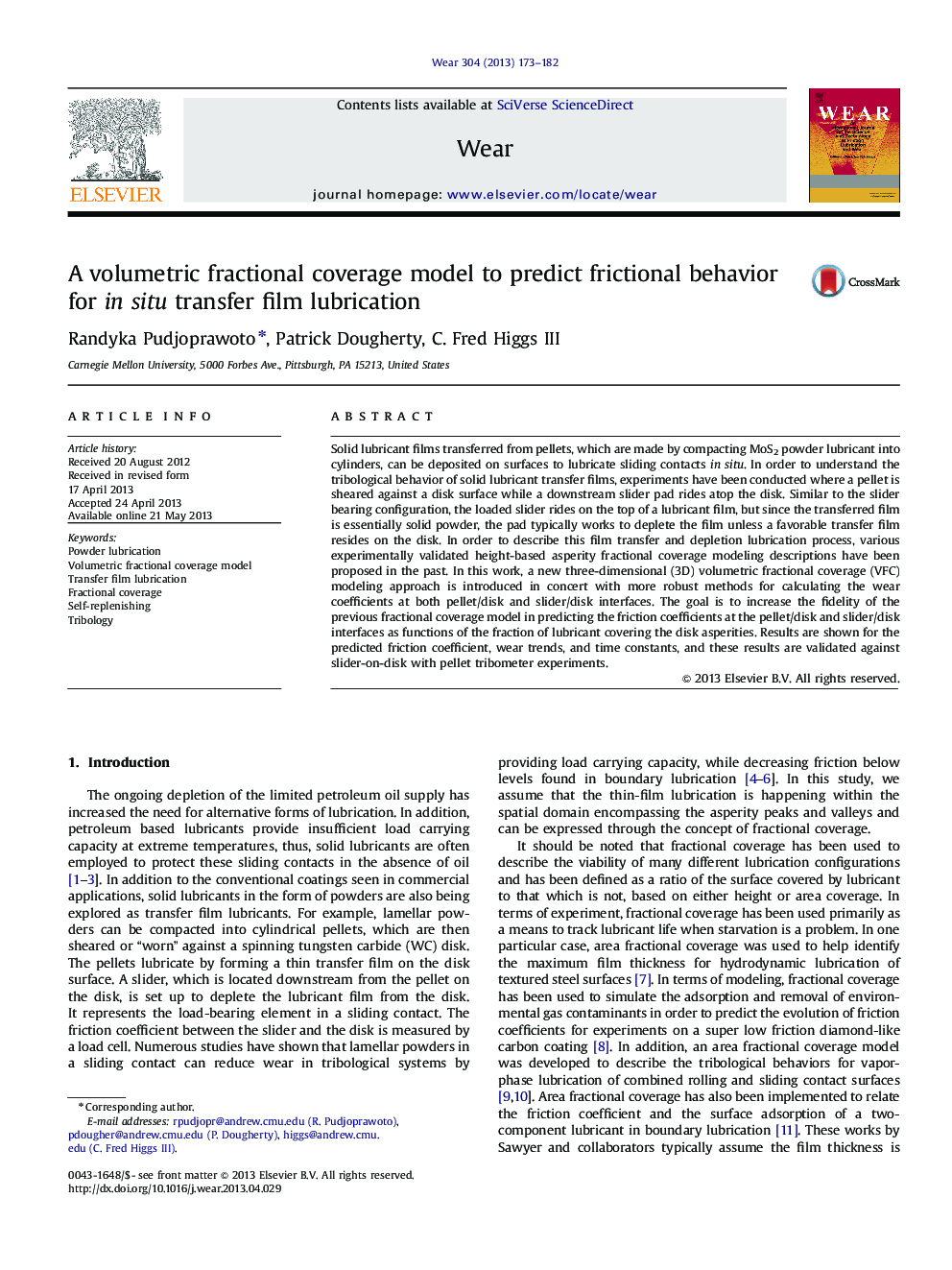| Article ID | Journal | Published Year | Pages | File Type |
|---|---|---|---|---|
| 7004773 | Wear | 2013 | 10 Pages |
Abstract
Solid lubricant films transferred from pellets, which are made by compacting MoS2 powder lubricant into cylinders, can be deposited on surfaces to lubricate sliding contacts in situ. In order to understand the tribological behavior of solid lubricant transfer films, experiments have been conducted where a pellet is sheared against a disk surface while a downstream slider pad rides atop the disk. Similar to the slider bearing configuration, the loaded slider rides on the top of a lubricant film, but since the transferred film is essentially solid powder, the pad typically works to deplete the film unless a favorable transfer film resides on the disk. In order to describe this film transfer and depletion lubrication process, various experimentally validated height-based asperity fractional coverage modeling descriptions have been proposed in the past. In this work, a new three-dimensional (3D) volumetric fractional coverage (VFC) modeling approach is introduced in concert with more robust methods for calculating the wear coefficients at both pellet/disk and slider/disk interfaces. The goal is to increase the fidelity of the previous fractional coverage model in predicting the friction coefficients at the pellet/disk and slider/disk interfaces as functions of the fraction of lubricant covering the disk asperities. Results are shown for the predicted friction coefficient, wear trends, and time constants, and these results are validated against slider-on-disk with pellet tribometer experiments.
Related Topics
Physical Sciences and Engineering
Chemical Engineering
Colloid and Surface Chemistry
Authors
Randyka Pudjoprawoto, Patrick Dougherty, C. III,
